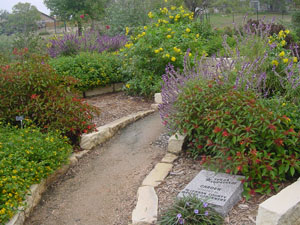


BMP Rules Ordinances and Rules for Implementing
Irrigation BMP Irrigation System Design & Installation Irrigation system standards which have been passed by rule or ordinance include requirements for installation of rain sensors or soil moisture sensors, use of ET controllers, and/or location of irrigation heads in relationship to hardscapes (distance from curb or walls).
Cities may wish to take further steps to require irrigation systems to have certain types of heads based upon total area irrigated, require specific hydrozoning measures, limit the placement of irrigation heads near curbs and other hardscape, require rain sensors, SWAT irrigation controllers, or eliminate water wasting irrigation systems in small medians, buffer zones and entrances altogether. Appendix A.1 includes landscape and irrigation standards, published by the Lower Colorado River Authority (LCRA) which have been used as templates for city ordinances and by homeowners associations for deed restrictions and covenants. The State of California designed a model landscaping ordinance structure for use by municipalities.
Concerns about the ability to enforce irrigation standards on the residential sector, with new construction including everything from single homes to planned unit developments, leads some utilities to focus on commercial customers. Municipalities with ordinance-making powers should consider adopting ordinances that require all new apartment complexes and commercial buildings to install a water conserving landscape. This can often be accomplished by amending an existing commercial landscape ordinance. The utility should ensure that landscape irrigation system specifications are coordinated with local building codes and zoning ordinances. A careful review of both of these sections of local government code is necessary to determine if preexisting requirements may be inconsistent with desired water conservation elements. Often introducing water-conserving elements into local code by amendment involves removing or revising existing language. If changes are desired to sections of the code involving zoning, it is important to plan for appropriate review and approval by planning or zoning boards and/or commissions. Utility staff must be prepared to present the information about proposed changes and potential water savings to audiences which are not familiar with conservation or water utility issues. Existing zoning and building code also may be organized in a way that requires major changes to a number of different sections of the code. Working with city attorneys, the water utility staff should keep in mind that careful review is necessary to prevent a result which has contradictory or conflicting requirements between different sections of code. Sufficient time and background information should be allowed as part of an ordinance process. It is a very good idea to present proposals to local construction, landscape, and development representatives so that they can understand the reasons for and the extent of each ordinance proposal. These public involvement and input efforts in developing new rules can both help the utility to make minor modifications which address concerns of the affected parties, and also avoid opposition which may stem from customers who misunderstand the provisions or potential impact of proposed provisions. Ordinance or rulemaking processes can be used both for equipment standards and for behavior changes. Although most often used during drought, irrigation scheduling ordinances can be used in wet years as well as dry to manage water lost to evaporation by requiring irrigation systems to be run at night or early in the morning,
Compliance Activities: Education & Enforcement These are important considerations in choosing ordinance provisions. The availability of staff to ensure compliance with provisions is crucial, as is the education of the staff. Utility conservation staff or outside experts must be available to educate the staff that will be directly responsible for reviewing plans, or performing inspections on irrigation systems. Since backflow prevention devices are required for installation of automatic irrigation systems, backflow device inspectors are potential compliance officers for irrigation system design and installation ordinances - but only if they are properly trained and have the funding for the additional inspection activity.
Outdoor irrigation when regulated by time-of-day or day-of-week is often defined as a water waste, and enforcement is handled as part of the city code for misdemeanor violations of ordinance. The City of El Paso uses peace officers to enforce time of day and day of week irrigation ordinances during times of drought and non-drought periods as well. Notices of violations (NOV) are often preceded by warnings, and the number of warnings prior to enforcement activity varies around the country. In order to process potential violations observed by customers, utilities with time-of-day or day-of-week programs operate a “Hotline” telephone number, or website form
At each stage of an ordinance process, from drafting, through passage and during enforcement, education is necessary. In order to gain public support for the ordinances, the public needs to understand the importance of water conservation, to obtain rules that are enforceable and supported by the affected customers, they must feel they are fair, and that they are able to and understand how to comply. In order to ensure that enforcement of the rules is possible, the general public needs to know how to notify the utility about alleged violations, and the enforcement measures, whether they include warnings, and how large a fine is assessed, need to be perceived as fair. |
|
|
|
